California is poised for a surge in housing, but this one won’t look like those of years past. Enter an intriguing new housing solution: the Accessory Dwelling Unit, or ADU. An ADU is a secondary housing unit built upon a single-family residential lot, and has historically been mired in prohibitive local zoning regulations that have hindered development. But recent changes in California laws have shifted this balance, and it is now easier than ever to build an ADU. Just in time, really, as a number of factors are making ADUs more enticing than ever.
According to the Pew Research Center, a record 64 million Americans live in multigenerational households. This upward trend accounts for more than one in five Americans living in homes with adult children or aging parents. Faced with the ever-growing cost of nursing homes and a brutally competitive California housing market, families are searching out creative ways to live together, better.
The ADU has become the most popular solution to this growing trend, and for good reason. The cost of care facilities and nursing homes averages around $100,000 per year, and is going up. This is money spent, not invested. A thoughtfully designed ADU, by contrast, can increase your property value and provide long-term, passive income once your elderly parent no longer needs it.
Removal of red tape, prohibitive healthcare costs, and increased property value are not the only benefits to exploring this new dwelling frontier. Building an ADU offers many personal benefits as well. Seniors’ social and familial bonds are strengthened through multigenerational living. Studies show grandchildren do better in school and seniors live longer when living together.
Peace of mind for the entire family also increases, as the logistics of health concerns and family responsibilities become easier to manage. Grandparents can provide necessary childcare during both the workday and date nights, and travel costs are minimized for all. Loneliness, one of the hardest aspects of getting older, is also substantially reduced when aging parents move in with you. At the same time, ADUs help each family member preserve independence and privacy while cohabiting on the same property.
So how do you ADU?
When planning for an ADU, you’ll want to consider several factors. Do you go with prefab or custom build? How big a unit will you need and how will you use it? Who will lead the design, permitting and construction process? Will you build a freestanding, attached or converted ADU? What is your ADU budget?
Even though ADUs add value and can significantly reduce long-term expenses for an aging parent – remember that $100,000/year price tag for nursing homes!? – cost is still a consideration. ADUs can often cost more per square foot than a full-sized home. This is due to a reduced efficiency of scale for labor and materials, and a proportionally larger bathroom and kitchen square footage, relative to the overall footprint. Moreover, ADUs are typically built in snug locations difficult to access with large equipment.
If you choose to purse an ADU, you will want to do it right. Hire professionals experienced with ADU design and construction. Design for Aging in Place. Determine your needs, budget, desired location and timeline. And…COMMUNICATE! Open communication among family members is essential to successful multigenerational living. How will resources, bills, and schedules be handled? How many weekly meals will you eat together? Who will pay for dinners out? Do you pool groceries and electricity bills? Having these conversations early on will help align expectations and minimize unintentional frustrations.
Want more information? Visit Encircle Life to learn how we can help restore your peace of mind, give you vital information about lifestyle options, create a customized plan of action, and provide follow-up support to you and your family.
Resources:
https://abioproperties.com/what-is-an-adu/
Projections and Implications for Housing a Growing Population: Older Households 2015-2035,


